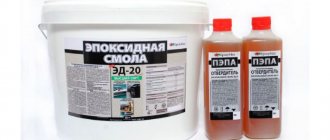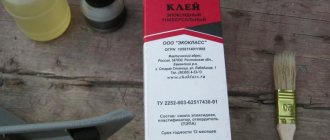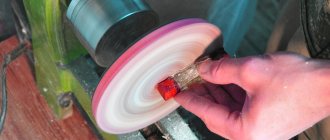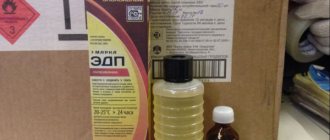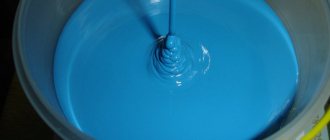How to dilute epoxy resin for better fluidity
Just the other day, we reviewed with you the top best epoxy resins . In connection with the questions we receive from you, we would like to tell you how to dilute epoxy resin for better fluidity. After all, many people most likely often have problems with this. Due to ignorance and most likely due to inexperience, many people use the wrong thinners.
Important! Very often there is a need to dilute the epoxy resin to reduce the viscosity level or increase better absorption. In this regard, many, especially beginners, do not know what substance to dilute the glue with in order to improve its technical characteristics. Due to inexperience and ignorance of some of the nuances in this matter, many people use acetone or some other unsuitable solvents.
But before you start diluting anything, you need to know how to calculate epoxy for pouring , how to fill it correctly, what needs to be used for this, and much more. Therefore, if you have not familiarized yourself with this yet, I highly recommend studying it.
Only proven resin thinners
Dilution with solvent
Thinning epoxy resin using a solvent has both positive and negative aspects. This is one of the easiest and fastest ways to dilute epoxy glue, but it has the following disadvantages:
- The strength of future sizing is greatly reduced, so it is not recommended to dilute the epoxy resin with a solvent if it is necessary to use the glue in serious work;
- The hardening time of the glue increases, which increases the required retention time of the products being glued;
- There is a possibility of resin shrinking in the glued area, which can cause microcracks;
- The solvent contained in the adhesive mass can greatly harm some types of surfaces;
- Fluidity on vertical surfaces increases greatly, which will complicate working with such surfaces;
- If such a solution is used in commercial organizations, there is a possibility of receiving an impressive fine from inspection authorities.
Basic methods for cleaning stains
The choice of method for removing epoxy at home depends on the size of the stain, how long ago it appeared, and the delicacy of the base material. Sometimes it is better to remove the defect mechanically; in other situations it is worth using an epoxy resin solvent. The basic principle of washing off a substance is to start the reverse process, when the hardened mass begins to liquefy again. This can harm the surface, so if it is valuable, less aggressive techniques are used.
Heating the base
During the polymerization reaction of epoxy resin, excess heat is always generated. This is due to the peculiarities of the chemical reaction: the combination of epoxy groups and the hardener provokes heating of the mixture. This is the basis for the method of dissolving glue after returning it to its original state of aggregation. The method is suitable for washing off resin deposits from furniture and tiles.
A hair dryer will be useful for heat treatment of the area. The technique for removing frozen mass is as follows:
- wipe the surface of the area with acetone, white spirit or other degreaser;
- turn on the hairdryer, heat the stain to a temperature of more than 180-190 degrees (usually this is the heat resistance limit of the epoxy);
- as the stain heats up and liquefies, you need to clean it; to make the task easier, you can drop a little acetone inside the stain;
- It is better to wipe off the defect with a soft cloth or sponge; if necessary, you can use a sharp knife;
- the remaining material is heated again and the procedure is repeated until the item is completely clean;
- usually the entire stain removal process takes no more than 3-5 minutes;
- If desired, you can use a soldering iron instead of a hair dryer to heat the resin through the paper.
It is extremely undesirable to allow the mass to boil during heating. This can cause it to rapidly clot, after which the solubility will seriously decrease. Cleansing should be done in small sections, heating them sequentially. When cleaning wood, acetone must be used as a solvent; it will prevent the material from cracking from heating.
Freezing Pollution
To implement this cleaning method, you do not have to place the products in the freezer, especially since this is not always possible. You should buy a special refrigerant in the store; it is sold in the construction and repair departments. Working with this substance is permitted only with the use of personal protective equipment. Therefore, at the same time, you need to purchase glasses, a respirator, and gloves. Without them, there is a risk of damage to the body from solid fragments.
The procedure for removing stains is as follows:
- open windows or turn on fresh ventilation;
- remove children and pets from the premises;
- shake the refrigerant bottle thoroughly;
- spray the product over the area of the resin that has managed to harden from a distance of 30 cm (keep the container only with the neck up);
- after the stain has become brittle and begins to crumble, it must be quickly rubbed off, scraped off with a knife or metal spatula. You can also break it with a hammer and collect it with a broom or vacuum cleaner;
- if necessary, the refrigerant is sprayed again;
- epoxy resin fragments should be thrown away immediately, sealed in a sealed plastic bag.
Mechanical removal
This method is best suited if the resin cannot be chemically washed off, and the thermal effect can harm the delicate surface. In such a situation, you should take a sharp knife (for example, a stationery knife), a razor, or a thin iron spatula. Use this object to carefully remove epoxy stains until the base material is exposed. It is worth cutting off the stain layer by layer so as not to accidentally damage the base. If there is a large area of contamination, you will have to be patient - the process will be labor-intensive.
Chemical solvents
Epoxy resin is a soluble material, but not all solutions can wash it off. A distinctive property of epoxy is its chemical resistance, so you will have to choose a truly aggressive substance to soften the stains. Even when purchasing, you need to read on the composition whether it is suitable for the existing type of surface. Many solvents damage leather, leave stains on stone, and literally burn through plastic. You need to be especially careful with expensive furniture and fabric coverings.
How to remove a stain without damaging the base? You can try acetone, varnish or enamels solvent. First, drop a little product into the center of the influx and monitor its reaction. If it begins to soften, then the epoxy can be completely washed off. Wipe areas of the resin with such means, while simultaneously cleaning the surface mechanically.
You should only work in a respirator with doors and windows open. It is better to work in the fresh air, because the vapors of such liquids are very toxic. You cannot immediately pour a lot of solvent onto plastic or wood; the material will certainly be damaged.
What else can thin epoxy resin? Epoxy dissolves perfectly in methylene chloride, but it is so caustic and dangerous (carcinogenic) that it is not worth risking your health. At home, craftsmen often try to wash off the resin with the following substances:
- nail polish remover;
- denatured alcohol;
- sulfuric acid;
- wash SP-6;
- DMF, DMSO.
What solvent can I use?
Any weak solvent will be suitable for use in epoxy mortar. Adding too much solvent can have a disastrous effect on the final adhesive solution, so don't waste your money on these types of solvents. A regular varnish solvent is best; it will have the least effect on the quality of the glue and will not change its color at all. If this type of solvent is unavailable, it is not necessary to go to the store to buy it; it can be replaced with ordinary acetone. In this case, you need to understand that the quality of the resulting adhesive solution will be somewhat worse, and the color of the glue may change quite a lot.
If both types of solvent are not available, a solvent with a percentage of no more than 5% can be used. The use of stronger solvents is permitted solely at your own risk.
Tags
from epoxy resin Types of epoxy resins dilute epoxy resin like epoxy resin for epoxy castings create epoxy materials Epoxy resin or epoxy glue feature of epoxy compositions from epoxy resin. epoxy resin epoxy resins epoxy resin pre-epoxy resin or quality of resin in Epoxy resin pre-epoxy no resin. curing resin loses epoxy resin from thickened resin diluent added solvent. diluted with solvents are used with solvents resins or solvents completely diluted with solvents epoxy volatile solvents better the best solvent for the ratio of solvent to the help of solvents The introduction of solvents is
diluted time plasticizer viscosity read solution
Thermal resin dilution method
This method involves heating the epoxy adhesive to high temperatures in order to soften it as much as possible. The heating method has tangible advantages over dilution using a solvent. The solution obtained by heating is not subject to a decrease in sizing strength, does not cause such strong subsequent shrinkage and does not harm the surface of the products.
But the thermal method has its drawbacks:
- The increased complexity of using this method of softening epoxy glue, not everyone will be able to quickly and correctly apply the heated epoxy mass;
- There is a possibility of severe overheating of the adhesive solution, which can lead to boiling with the release of harmful vapors and further hardening of the adhesive;
- Increased speed of glue hardening, which is why it is necessary to work with the adhesive mass at the highest possible speed;
- There is a chance that the epoxy resin will completely deteriorate, making it unable to be used for gluing products.
Brands and manufacturers
A variety of polyester resins from imported and domestic manufacturers are produced. Packages of many resins - from 1 kilogram or more.
Neon S-1
Neon S-1 from Rempolymer - pre-accelerated thixotropic resin
, which has low viscosity and an average level of chemical activity. The composition contains styrene and excellent quality fillers. The product is most suitable for repairing boats, boats, and auto tuning. Gives a slight shrinkage, after dilution it must be applied within 15 minutes. Polymerization time is 45 minutes.
Reflex
Reoflex Repair Resin or Reflex polyester resin is a laminating agent, has an orthophthalic base and a reduced amount of styrene. The description states that the resin
has high adhesion to metal, paint and varnish coatings, wood, laminate, and primers.
The resulting coating has greater resistance to impacts, scratches, etc., vibration, and is resistant to temperature changes and the effects of lubricants, gasoline, and oils. The addition of special elements allows the material to be plasticized and used for repairing bumpers and filling gaps in metal.
Casting resin Norsodyne O-12335 AL
NorsodyneO-12335 AL is a pre-accelerated translucent resin with greater resistance to ultraviolet radiation. It has a very long gelatinization time - 16 - 22 minutes. It must be diluted with Butanox hardener in a volume of 0.03% of the total mass. It is used for processing materials with a porous surface, such as glue for rubber boats, car repairs. Use is allowed at temperatures from +15 degrees.
Novol Plus 720
Novol Plus 720 (Novol Plus 720) is another popular product that can be used to glue rubber products, seal holes, openings, and reinforce plastic structures. It can be used to repair camping trailers, yachts, and car bodies.
Butanox is used as a hardener; it can be replaced with 50% benzoyl peroxide paste. Polyester resin has great strength, can be easily sanded, and can be coated with polyester
putties. The consumption of 1 m2 during use as an adhesive is not very large; the product can be used with glass mat.
Other brands
You can glue different surfaces and laminate them using polyester resin Eskim ES-1060. The composition is less viscous than a large number of materials, due to this it is easy to apply.
Special quality - low sensitivity to the amount of solvent and temperature for curing. It’s easy to add any coloring to the resin with your own hands, resin
combines with most pigments. Cement, talc, gypsum can be added to the product and used to produce 3D floors.
Polyester resin Polipol 3401-A is an orthophthalic material with low shrinkage and practically does not change its initial shape after curing. Widely used for the manufacture of chemical-resistant containers, parts of boats, attractions, and swimming pools. How long does it take for the product to dry? The gelation time is 30 minutes, subsequent curing depends on the room temperature.
What should not be used to thin epoxy glue?
The use of too strong solvents is strictly not recommended, as this can lead to complete unsuitability of the resulting adhesive mass. This is due to the presence of a large amount of caustic substances that simply dissolve the epoxy resin, leading to its deterioration.
Some people try to use water, which is a very stupid and completely illogical solution. Water, no matter what temperature, is simply unable to soften epoxy glue. Water will only ruin the adhesive solution, so you can't use it, no matter what some people say.
When using the thermal method of softening epoxy resin, it is allowed to heat the resin to a temperature not exceeding 50ºC, otherwise the likelihood of overheating of the resin with subsequent boiling or even hardening greatly increases, which will make it unsuitable for subsequent sizing of products. Heating for too long is also strongly discouraged, as it can also lead to negative consequences that prevent further use of the epoxy resin.
Don't overpay
In some stores you can find a special solution for softening epoxy mortar. The decision to purchase it lies solely with the buyers. Such solutions can cost significantly more, but they are not always very different from the cheapest solvent. When purchasing such solutions, you need to carefully review the label; in cases where all the information on the label indicates that the bottle contains the simplest solvent, you should not overpay much and it is better to buy a regular solvent, which is cheaper and practically no different from the expensive one. dummies."
Conclusion
Choosing a method for diluting epoxy resin is not so simple. It is necessary to take into account many factors: the place where the work will be done, the types of surfaces on which the glue will be applied, skills in handling epoxy glue, the person sizing the products, and more. A dilution method that is ideal in one case may be completely unsuitable in another situation. Therefore, you first need to carefully study all the advantages and disadvantages of various methods of softening epoxy mortar, and only then make your final decision on further actions.
Reasons for incomplete cure
It happens that the resin does not acquire the required hardness after all the work is completed. The surface remains sticky and the strength is low. If incomplete curing is temporary, it can be easily eliminated by increasing the temperature to +100...+130 degrees. Constant incomplete hardening cannot be removed; the mass will be spoiled. How to avoid such problems? Here are the main recommendations:
- do not cure at temperatures less than +23 degrees, humidity more than 65%;
- do not change the manufacturer’s recommended proportions of components for a specific polyester resin;
- exclude the penetration of pollutants and impurities, use only clean dishes.
The last point is especially important to observe, since even a small amount of fat, water and other substances disrupts the polymerization process. Polluted air, especially with phenol vapor, also has a bad effect on the quality of the mixture.
Upon completion of the work, the surface of the resin is covered with a film. This will prevent the mass from coming into contact with air.
Physics and Chemistry of Curing
By themselves, polyesters would cure very slowly, so they are combined with a monomer capable of copolymerizing with polyester. The rate of copolymerization of polyester double bonds with monomer double bonds is much higher than the rate of interaction of polyester double bonds with each other. The curing process is initiated by radicals formed during the breakdown of peroxide initiators and looks like this: after the introduction of the initiator and accelerator, nothing externally happens for some time. Despite the absence of visible changes, a reaction of the hardeners with the inhibitor is already taking place inside the resin. Once the inhibitor is used up, the viscosity of the polyester resin increases sharply, it loses its ability to flow and turns into a jelly-like state (gel). Next, this mass turns into a rubber-like and finally into a solid state. The curing process occurs with the release of heat. Warming up can be quite significant.
It should be taken into account that the gelatinized polyester resin is no longer suitable for molding, so it is necessary to have time to fill the molds before the moment of gelatinization occurs.
